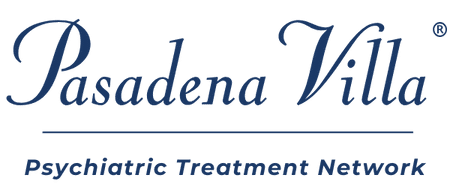When everyday requests start to feel like pressure, even simple tasks can lead to stress, procrastination, or withdrawal. For some, this pattern doesn’t fit the usual picture of autism. Others may recognize it in themselves but can’t explain why expectations feel so heavy.
Pathological demand avoidance (PDA) often shapes how adults with autism navigate work, relationships, and daily life. It isn’t about being defiant — it’s an anxiety response rooted in the need for control and autonomy. Recognizing these traits can bring relief and clarity, both for adults with autism and for loved ones trying to support them without adding pressure.
This post explores how PDA differs from more typical autism traits, what it can look like in adults, and practical ways to build trust, reduce pressure, and support emotional balance.
What is Pathological Demand Avoidance?
Pathological demand avoidance is a behavioral profile often seen in people on the autism spectrum, though not officially recognized as a separate diagnosis in most diagnostic manuals. It describes a pattern where an individual experiences an extreme anxiety-driven need to resist or avoid everyday demands and expectations, even ones they might want to meet.
Core Traits of PDA Autism
-
- High demand avoidance – When someone resists requests or expectations (from others or themselves) because they feel intense anxiety or loss of control when demands are placed on them.
-
- Social strategies to avoid demands – Instead of refusing outright, they may distract, negotiate, make excuses, or withdraw to regain a sense of control.
-
- Need for control – Everyday tasks (like getting dressed, doing homework, or following routines) can feel overwhelming if not self-initiated.
-
- Sudden mood changes – When they feel pressured, they might shift quickly from calm to angry, anxious, or withdrawn.
-
- Comfort in role play or fantasy – Many people with PDA use imaginative play or alternate personas to manage anxiety and gain a sense of safety.
How It Differs from Typical Autism Traits
While PDA shares core traits with autism — such as sensory sensitivities and differences in social communication — it’s distinguished by how anxiety and control drive its behaviors. The following areas highlight the main differences.
Motivation Behind Avoidance
In autism, difficulties with demands often stem from challenges in understanding expectations or processing information. In PDA, the avoidance comes from intense anxiety and a need to maintain control. Even simple requests like “get dressed” or “sit down for dinner” can trigger a fight, flight, or freeze response if they feel imposed.
Relationship with Routine + Structure
Many adults with autism find comfort in routines and predictability, which help them manage uncertainty. People with PDA, however, tend to resist routines imposed by others, even familiar ones, because following someone else’s structure feels like a loss of autonomy. They may prefer spontaneity or routines they design themselves.
Social Interaction + Communication
People with PDA can appear more socially fluent or expressive than others with an autism profile, especially in casual conversation. They might use charm, humor, or distraction to avoid doing something asked of them. This can lead to misunderstandings, as others may see their behavior as manipulative when, in reality, it’s a coping mechanism to reduce anxiety.
Response to Typical Autism Support Strategies
Structured programs or reward systems that often help adults with autism — such as clear routines or token systems — can increase stress for someone with PDA. These approaches heighten their sense of pressure and loss of control, often leading to stronger avoidance behaviors. Instead, PDA requires approaches that emphasize collaboration, choice, and emotional safety.
Signs of PDA Autism in Adults
A person with autism that also has a PDA profile experiences the same anxiety-driven need for control seen in children with the profile, but their avoidance often shows up in more subtle or socially complex ways. Many adults with autism have learned to mask their behaviors, making PDA harder to recognize. These are some of the key signs that may suggest PDA traits in adults.
1. Persistent Avoidance of Everyday Responsibilities
Adults with PDA may go to great lengths to avoid tasks that feel expected or obligatory, even those they logically want or need to do. This could include avoiding emails, phone calls, or household chores, or procrastinating on work projects. The avoidance isn’t due to laziness or disinterest — it’s a stress response to the pressure of expectation.
2. Creative or Indirect Avoidance Strategies
Many adults with PDA develop sophisticated ways to avoid demands without outright refusal. They might distract, joke, overexplain, or redirect conversations to delay doing something. Others may overcommit to unrelated tasks to appear productive while avoiding the specific demand that feels overwhelming.
3. Strong Need for Autonomy + Control
A defining trait in adults with PDA is the deep need to feel in control of themselves and their environment. They may resist authority, micromanagement, or rigid systems at work. Even small perceived intrusions, like unsolicited advice, can trigger discomfort or anger in autistic adults with PDA. They often function best in flexible settings where they can set their own pace and structure.
4. Fluctuating Anxiety + Emotional Overload
Because PDA is rooted in anxiety, emotions can shift rapidly. An adult may seem calm and capable one moment, then suddenly withdrawn, irritable, or panicked if they feel pressured. This can look like autistic burnout, mood instability, or emotional shutdown, but it’s often the result of prolonged stress from unrecognized demands.
5. High Imagination + Role-Based Coping
Adults with PDA often have strong creative or imaginative abilities. Some may use fantasy, gaming, creative writing, or humor as safe ways to express themselves and escape pressure. Others may “mask” by slipping into different social roles to manage anxiety or control interactions.
6. Outward Social Confidence with Inner Exhaustion
Many PDA adults appear charming, articulate, or socially confident, especially in short bursts. However, maintaining that front often comes at a high cost. After social interactions, they may need long periods alone to recover. They might also struggle to maintain consistent relationships due to the ongoing tension between wanting connection and fearing expectation.
7. Intense Reaction to Perceived Expectations
Even neutral or well-intentioned requests like “let’s go out” or “can you call me back?” can feel overwhelming if the person senses obligation behind them. They may withdraw, avoid replying, or become defensive without fully understanding why. This hypersensitivity to expectation is one of the clearest signs of PDA in adulthood.
Support Strategies for Autistic Adults with PDA Traits
Adults with a PDA profile often find traditional behavioral or structured approaches overwhelming because they heighten the sense of pressure and loss of control. Support works best when it lowers anxiety, builds trust, and allows the person to feel safe and autonomous. The following strategies are designed to do just that.
1. Prioritize Autonomy + Choice
For someone with PDA, demands often trigger anxiety because they signal a loss of control. When the individual has the freedom to make their own decisions, the sense of threat decreases, and cooperation becomes more natural. Providing choices helps shift the focus from “you must” to “you can,” which allows the person to re-engage on their own terms.
To put this into practice:
-
- Offer options instead of directives (“Would you rather start with this or that?”).
-
- Invite collaboration (“How do you want to approach this?”).
-
- Build flexibility into plans so expectations feel shared, not imposed.
2. Use Indirect Language + Gentle Requests
Direct instructions can easily trigger avoidance, even if the task itself isn’t difficult. It’s not defiance, but anxiety responding to pressure. Using indirect or conversational language helps keep requests from feeling like demands and gives the person more room to choose how they respond.
You can do this by:
-
- Framing tasks casually (“I’m going to make coffee” instead of “Make coffee”).
-
- Lightening the tone with humor or curiosity.
-
- Avoiding “you should” or “you need to,” which can increase resistance.
3. Focus on Collaboration, Not Compliance
PDA adults respond best when they feel like equal participants rather than subjects of control. The goal isn’t to enforce compliance but to build trust and shared understanding. Collaboration helps lower anxiety by replacing hierarchy with partnership — a dynamic where both people feel heard.
Try this approach by:
-
- Using problem-solving language (“What do you think would work best?”).
-
- Avoiding reward or consequence systems, which can reinforce pressure.
-
- Framing goals as mutual or shared outcomes instead of assigned tasks.
4. Create Low-Demand Environments
When the nervous system is already overloaded, even small expectations can feel enormous. Reducing unnecessary demands gives the person with autism space to regulate their emotions and re-center themselves. It also prevents the shutdowns or meltdowns that can follow prolonged stress.
You can make environments feel lighter by:
-
- Breaking large tasks into smaller, optional steps.
-
- Using self-managed tools like checklists or reminders they control.
-
- Planning downtime or low-demand periods after stressful days.
5. Support Emotional Regulation + Recovery
PDA adults often experience emotional swings tied to anxiety and overload. What looks like moodiness or withdrawal is often an attempt to regain control after too much stress. Instead of pushing for discussion or action in the moment, it helps to focus on comfort, calm, and recovery first.
You can encourage this by:
-
- Suggesting calming activities they choose like music, journaling, or time alone.
-
- Recognizing that shutdowns are coping mechanisms, not avoidance.
-
- Offering reassurance and stability before problem-solving.
6. Build Trust Through Consistency + Respect
Trust is fragile for someone with PDA because they’ve often felt misunderstood or controlled. Respecting boundaries and following through on what you say shows that collaboration is safe. Over time, this steadiness builds the foundation for growth and connection.
You can nurture trust by:
-
- Keeping promises and communicating honestly.
-
- Be honest and clear about what’s non-negotiable (like a work deadline, policy, or safety rule) rather than trying to soften it
-
- Respecting personal space, especially after conflict or overwhelm.
7. Seek Professional + Peer Support
Because PDA traits can make traditional therapy or workplace systems difficult, finding professionals who understand this profile is crucial. The proper support can help an adult with PDA develop coping tools that respect their autonomy rather than challenge it.
Helpful steps include:
-
- Seeking therapists familiar with neurodiversity or trauma-informed care.
-
- Connecting with PDA-specific peer communities for shared experience and validation.
-
- Avoiding practitioners who interpret avoidance as manipulation or noncompliance.
Find the Right Support for a Calmer, More Flexible Life
Living with pathological demand avoidance can make even small expectations feel like too much. The right support helps ease that pressure, rebuilds trust, and creates space for real progress on your own terms.
At The Stables Autism Program at Pasadena Villa, we specialize in autism spectrum disorder treatment for adults, including those with PDA traits. Our approach focuses on flexibility, emotional safety, and real-world connection to help daily life feel more manageable.
If you or your loved one often feels overwhelmed by everyday demands, contact us today to learn how the right environment can make life feel lighter and more balanced.

